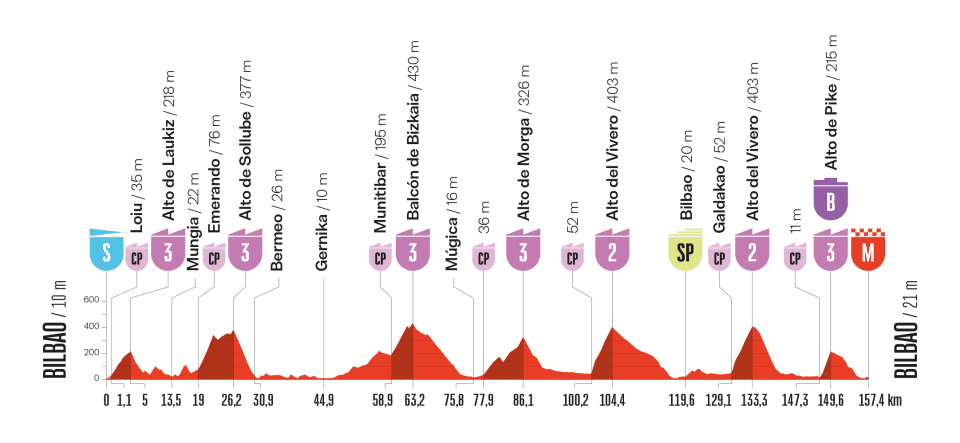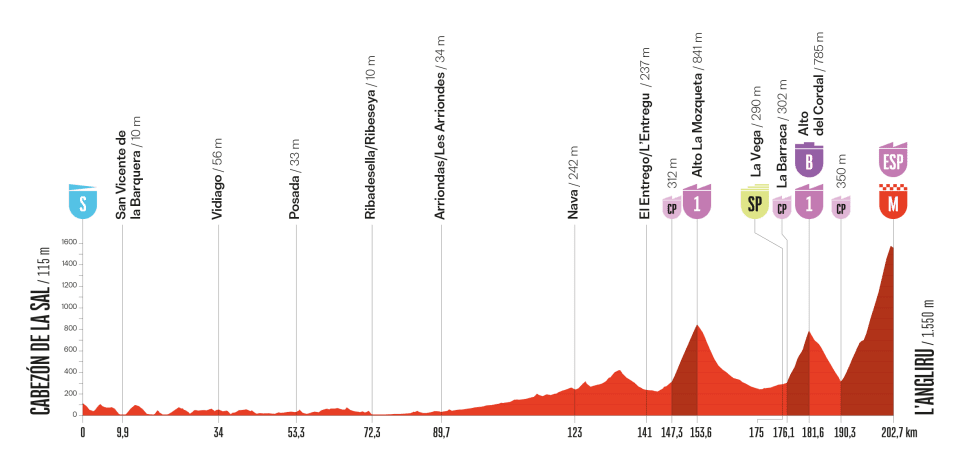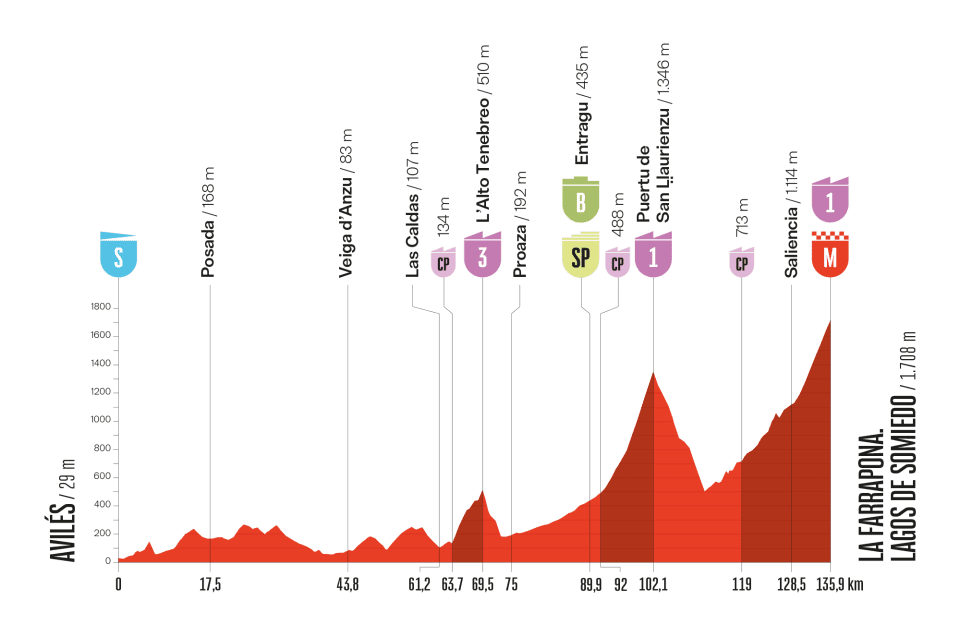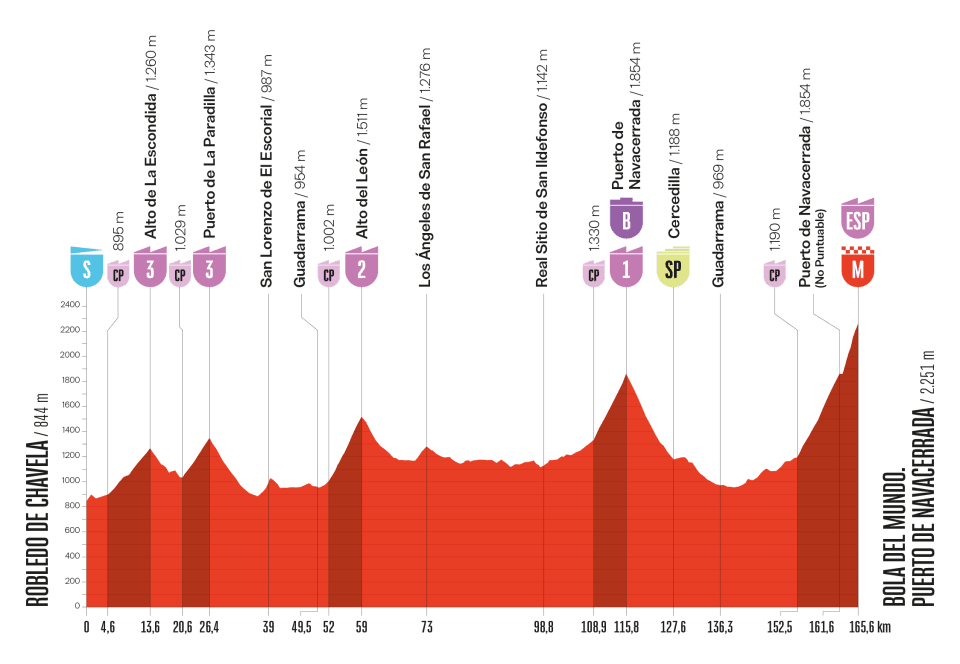
The Vuelta a Espana gets underway on Saturday, with the final grand tour of the season packed with its usual mix of undulating terrain, harsh, irregular climbs, and nary a flat stage in sight.
In truth there are any number of stages which could trip up promising maillot rojo contenders, from back-to-back early summit finishes in the opening week to the tricky final descent on stage 12, a banana skin for the less accomplished descenders of the peloton.
But from a myriad of possibilities we’ve narrowed it down to five stages that could prove critical in deciding the fate of the iconic trophy come Madrid.
Stage five: Figueres to Figueres, 24.1km
This year’s parcours features a number of lumpy stages in the opening week, but the first that’s likely to cause any significant time gaps is stage five’s team time trial. TTTs are something of a dying art in grand tours – there were none in either the Giro d’Italia or Tour de France – but stage five, the first on Spanish soil, could prove an early setback for a number of teams.
It’s entirely flat, but more than long enough to force significant gaps: 24km, the longest TTT since the 27.8km run won by Team Sky in 2016. Climbing specialists will lose time, but this – the first of two races against the clock (the other is the flat individual time trial on stage 18) – may prove more instructive regarding overall team strength.
And if one team with a co-leader strategy has a bad day, that could have significant consequences on the rest of the race. UAE have brought a stellar team for this stage: Joao Almeida is possibly the best against the clock of the overall field, and Jay Vine and Ivo Oliveira have notched significant results in the past.
By contrast, both Jonas Vingegaard and Matteo Jorgenson endured dismal ITTs on stage five of the Tour de France, shipping 1’05” and 1’13” respectively to the race leader. If Visma-Lease a Bike have another horror show here, they’ll be playing catch-up before the race has really begun.
Stage 11: Bilbao to Bilbao, 157.4km

This World Championships-style course is reminiscent of the 2023 Tour de France Grand Depart, and while it hardly features the punishing climbs and summit finishes that will make up the majority of key GC battlegrounds, the explosive, punchy climbs dotted throughout the Bilbao circuit could catch out some overall contenders.
Speaking of climbs: there are seven categorised ascents in total, with the final – the Alto de Pike – averaging 8.9% for 2.3km and coming less than 10km from the finish. It’s relentlessly up and down all day, similar to the Normandy and Brittany stages of this year’s Tour de France, where Tadej Pogacar ran amok, as well as the closing stage up and down the Cote de la Butte Montmartre. Of course Pogacar isn’t in action here, but the punchier GC riders will be aiming to stamp their authority on the race in a similar manner.
Stage 11’s position in the race is key too: it comes after the first rest day and with multiple nasty days’ worth of climbing in the legs, leading to fatigue and potential lapses in concentration that could be terminal on such a tricky parcours.
Stage 13: Cabezon de la Sal to L’Angliru, 202.7km

Arguably the Vuelta’s most fearsome climb, certainly its most iconic, the Alto d l’Angliru will be pivotal in deciding the outcome of the race. Averaging a fraction shy of 10% for 12.4km, the infamous ‘goat track’ climb features regular double-digit sections and ramps up to 24% near the summit.
That average gradient is deceptive: the first half hovers just under 7%, leaving the hardest, most irregular slopes for later on. “We’re not animals and this is inhuman,” David Millar famously said when the Vuelta tackled the Angliru in 2002, the Scot stopping a couple of metres from the summit in protest.
Before they even get near this hideous Asturian climb, the stage features nearly 100km of flat build-up ahead of two category one ascents, the Alto de Mozqueta and the Alto de Cordal: both shorter and less steep but punishing enough on their own, even with the hors-categorie L’Angliru to come. Those earlier climbs could wear down the GC contenders if enterprising rival teammates launch attacks or pile on the pace, further adding to fatigue.
In total stage 13 features 3964m of elevation gain in 202km of racing, a long day in the saddle – in fact the second-longest stage of the entire race – to compound the effects of the climbs. While the Vuelta may not necessarily be won here, it can certainly be lost if a major contender has a bad day.
Stage 14: Aviles to La Farrapona Lagos de Somiedo, 135.9km

The stage to L’Angliru is followed by another brutal day out, a much shorter run at 135km but by no means less difficult, with another 3,805m of climbing to surmount. Another three categorised climbs are on the menu, with an opening 60km of undulating, spiky terrain before the official climbing begins – all condensed into 90km or so.
We stay with the Asturias mountains: not as brutal altitude-wise as the Pyrenees, but by no means climbs to underestimate. The category-three Alto Tenebreo kicks things off before a steady climb up to the start proper of the category-one Puertu de San Llaurienzu (10.1km at 8.5%). There’s then a second summit finish in a row at Alto de la Farrapona, another category-one beast, the longest of the day at 16.9km and an average of 5.9%. The last climb kicks up to over 10% for the final 6km.
The rugged terrain and intensity of the climbing, packed into only a short distance, coupled with the fatigue already in the legs from the previous day’s climb to l’Angliru, will make this a pivotal stage for the overall standings.
Stage 20: Robledo de Chavela to Bola del Mundo, 165.6km

The riders’ reward for slogging through three weeks of leg-sapping terrain is an opportunity for one more GC showdown on the penultimate day of racing. It’s arguably the queen stage of the race, featuring a whopping 4,226m of elevation gain – the most of any stage this year – across five categorised climbs, with the final battleground the summit finish at Bola del Mundo, outside Madrid.
Two of those climbs, and the final two of the entire race, are the category-one Puerto de Navacerrada. Before then the route kicks uphill from the beginning, with two sharp category-three climbs in quick succession inside the opening 30km, before the cat-two Alto del Leon leads the riders into the brutal second half of the stage. The first time up the Puerto de Navacerrada is from its northern side (6.9km at 7.6%), before the riders must go again from the southern side, 9.1km at 7.3%.
And there’s still no respite, because the climb is actually 12.3km long at 8.6%: the final 3km comes in the form of another irregular, near-vertical track up the Bola del Mundo, which hits highs of more than 20% and forms the high point of this year’s race, at 2,251m above sea level.
Bonus seconds are on offer for the winner as a reward for hauling themselves through a hideously tough edition of the race. And as at this year’s Giro, all could change on the final real day of racing; indeed, inside the final 3km, where some will crack, and some will rise to the top.




